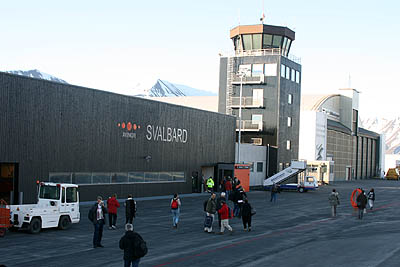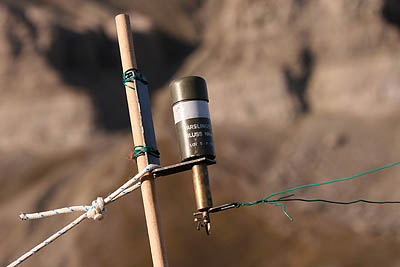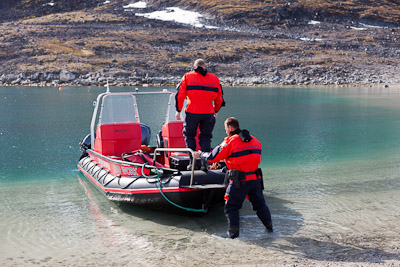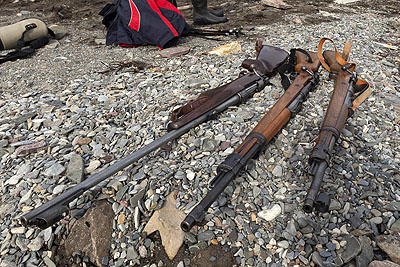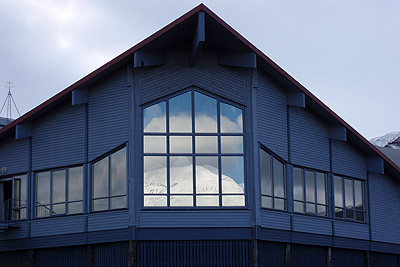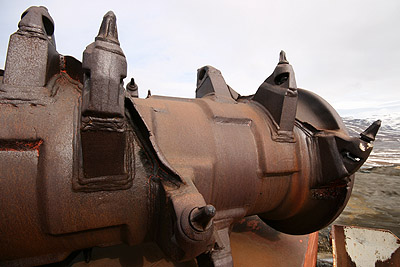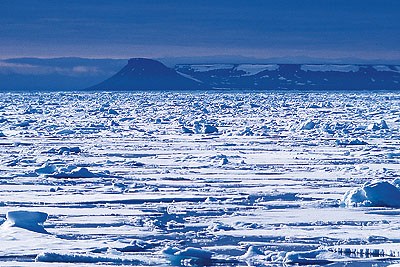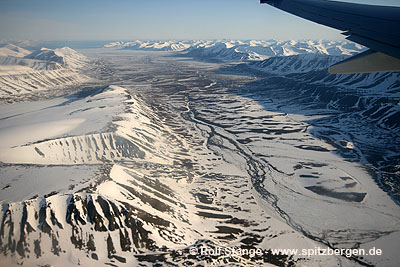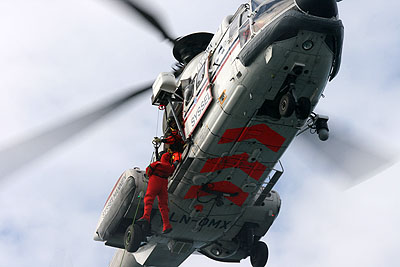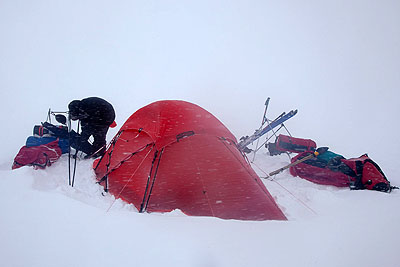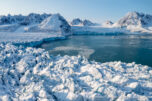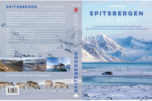-
current
recommendations- Liefdefjord
New page dedicated to one of Spitsbergen's most beautiful fjords. Background information and many photos.
- New Spitsbergen guidebook
The new edition of my Spitsbergen guidebook is out and available now!
- Liefdefjord
New page dedicated to one of Spitsbergen's most beautiful fjords. Background information and many photos.
Page Structure
-
Spitsbergen-News
- Select Month
- May 2025
- April 2025
- March 2025
- February 2025
- January 2025
- December 2024
- November 2024
- October 2024
- September 2024
- August 2024
- July 2024
- June 2024
- May 2024
- April 2024
- March 2024
- February 2024
- January 2024
- December 2023
- November 2023
- October 2023
- September 2023
- August 2023
- July 2023
- June 2023
- May 2023
- April 2023
- March 2023
- February 2023
- January 2023
- December 2022
- November 2022
- October 2022
- September 2022
- August 2022
- July 2022
- June 2022
- May 2022
- April 2022
- March 2022
- February 2022
- January 2022
- December 2021
- November 2021
- October 2021
- September 2021
- August 2021
- July 2021
- June 2021
- May 2021
- April 2021
- March 2021
- February 2021
- January 2021
- December 2020
- November 2020
- October 2020
- September 2020
- August 2020
- July 2020
- June 2020
- May 2020
- April 2020
- March 2020
- February 2020
- January 2020
- December 2019
- November 2019
- October 2019
- September 2019
- August 2019
- July 2019
- June 2019
- May 2019
- April 2019
- March 2019
- February 2019
- January 2019
- December 2018
- November 2018
- October 2018
- September 2018
- August 2018
- July 2018
- June 2018
- May 2018
- April 2018
- March 2018
- February 2018
- January 2018
- December 2017
- November 2017
- October 2017
- September 2017
- August 2017
- July 2017
- June 2017
- May 2017
- April 2017
- March 2017
- February 2017
- January 2017
- December 2016
- November 2016
- October 2016
- September 2016
- August 2016
- July 2016
- June 2016
- May 2016
- April 2016
- March 2016
- February 2016
- January 2016
- December 2015
- November 2015
- October 2015
- September 2015
- August 2015
- July 2015
- June 2015
- May 2015
- April 2015
- March 2015
- February 2015
- January 2015
- December 2014
- November 2014
- October 2014
- September 2014
- August 2014
- July 2014
- June 2014
- May 2014
- April 2014
- March 2014
- February 2014
- January 2014
- December 2013
- November 2013
- October 2013
- September 2013
- August 2013
- July 2013
- June 2013
- May 2013
- April 2013
- March 2013
- February 2013
- January 2013
- December 2012
- November 2012
- October 2012
- September 2012
- August 2012
- July 2012
- June 2012
- May 2012
- April 2012
- March 2012
- February 2012
- January 2012
- December 2011
- November 2011
- October 2011
- September 2011
- August 2011
- May 2011
- April 2011
- March 2011
- February 2011
- January 2011
- December 2010
- November 2010
- September 2010
- August 2010
- July 2010
- June 2010
- May 2010
- April 2010
- March 2010
- February 2010
- November 2009
- October 2009
- August 2009
- July 2009
- June 2009
- May 2009
- April 2009
- March 2009
- February 2009
- January 2009
- December 2008
- November 2008
- October 2008
- August 2008
- July 2008
- June 2008
- May 2008
- April 2008
- March 2008
- February 2008
- April 2000
- Select Month
-
weather information
-
Newsletter

| Guidebook: Spitsbergen-Svalbard |
Home →
Yearly Archives: 2011 − News & Stories
Eastern Svalbard
The discussion about a new administration plan for eastern Svalbard, potentially including closing larger areas for the public, has made a step further. A working group of the Sysselmannen has produced a paper that states that »current or future research in eastern Svalbard is not negatively influenced by other local activity in the area as of today. That East Svalbard is a nature reserve does already strongly regulate traffic in the area.« (Management plan for eastern Svalbard, Report of the working group Research and Education (Norwegian), Sysselmannen). A real definition for the term »reference area« is not produced, a real scientific need for such areas that are closed to any traffic (other than selected scientists) cannot be defined and is not claimed by researches.
Nevertheless it is suggested to close several large areas in eastern Svalbard as »reference areas«, to which only selected scientists that work on research areas with relevance for administration and politics have access. The map below gives an overview of the selected areas.
Closing these areas would have only minor impact on expedition cruising.
As can be expected, is the suggested version of the management plan met with strong critizism by inhabitants and local politicians in Longyearbyen, local tour operators and in the scientific world, such as UNIS:
- »It seems as if authorities want to make people deliberately tired (by means of the long duration of the process). … closing so large areas seems absolutely unnecessary. Within the existing regulations, the Sysselmannen has already far reaching possibilities to limit traffic in the nature reserves in eastern Svalbard.« This is said by Heinrich Eggenfellner, second chairman of Longyearbyen Lokalstyre (the local parliament) to Svalbardposten (39/2011). Eggenfellner assumes that the process is mainly driven by higher administrative levels in Oslo, which strongly influence the working group of the Sysselmannen: »my impression is as if the whole process is controlled by the adminstrative body within the Norwegian Polar Institute and the Directorate for nature administration. They are not in line with the scientists, so the whole things seems rather absurd.«
- The lacking scientific definition of »reference areas« and the lacking reasons for a real need for such areas are criticized, and so is the missing inclusion of fishing activities in the plan, while tourism and large parts of the scientific world are supposed to be kicked out.
- The current suggestion does threaten the foundations for the existance of UNIS, the local university in Longyearbyen, according to its director Gunnar Sand. UNIS does largely work with primary research and education, both at a first glance not necessarily relevant for administration and politics. Sand also questions the Sysselmannens competence to determine what kind of research is relevant, on the long term, also (but not only) for administration.
- The owner of this website and author of this arcticle agrees that areas, especially larger ones, should not be closed unless there is reason to do so such as real scientific or environmental needs.
The process is ongoing, a final decision and following legislation will need further time, possibly until late 2012.
Suggested so-called »reference areas« in eastern Svalbard.
Map source: Norwegian Polar Institute, modified by Svalbardposten.
Source: Sysselmannen, Svalbardposten
Visa and passport requirements
Many tourists do not know that Spitsbergen (Svalbard) is, opposed to mainland Norway, not part of the Schengen treaty system. Accordingly, if you need a visa to visit the Schengen area, then you will also need a visa to fly from Longyearbyen to Norway, even if you are just on a return journey from a shorter trip. As a result, when you apply for a visa at home to prepare a journey from outside Schengen area to Svalbard, it is advisable to apply for two visa rather than only one, so you can enter Norway when coming back from Spitsbergen without difficulties. If necessary, you can also get a visa from the Sysselmannen.
Remember that you will also need to show a passport or national ID card when travelling to and from Longyearbyen. Only Norwegian citizens are allowed to use, for example, a driving license. Non-Norwegian flight passengers have been denied access to their flight from Longyearbyen to Norway because they did not carry passport or ID card.
Longyearbyen airport, since early 2011 with passport control.
Source: Svalbardposten (3611), Sysselmannen
Polar bear alarm fence
When camping in Spitsbergen, it is common and makes sense to secure the camp against polar bears with an alarm fence (Norwegian: snublebluss), using tripwires and small explosive devices. The most reliable version NM4 comes from Norwegian military sources, but is not available anymore for legal reasons. The follower (M2) is considered not reliable and safe enough to be used in the field for polar bear protection. As a consequence, there are currently almost no alarm systems available in Longyearbyen to secure camps against polar bears.
Next to the obvious safety aspect, there is a debate to make technical systems for protection of camps against bears legally mandatory. It still needs to be defined what such “technical systems” might be, but alarm fences are at least an obvious part of any technical alarm system. The Sysselmannen is aware that it is difficult to make a system mandatory that is not available on the market and is trying to contribute in finding a solution, but so far without success.
Under the fatal polar bear attack on August 05 in Tempelfjord, a failing alarm fence contributed to the desaster.
In the UK, a system is available from Arctic Limited.
Polar bear alarm fence of the old type (NM4), which is hardly available anymore.
Source: Svalbardposten (3611), Sysselmannen
Tourism control during 2011 season
The Sysselmannen’s field inspectors have visited 85 ships and boats during the 2011 summer season, mainly on the west coast, but also in more remote regions including Hinlopen. Permits, ship papers and waste management routines are amongst what the field inspectors check routinely. Additionally, presence of authorities is shown to all visitors, who are encouraged to comply with relevant laws and regulations and to move carefully in the Spitsbergen environment. Controls also include camps and research activities.
The inspectors were in touch with 2403 persons and had only two complaints: one group had established their camp in in Grumantbyen (cultural heritage and accordingly protected). Another group had cut drainage trenches around their tents and left them at departure. The operator was requested to conduct a clean-up of the site.
Feldinspektoren des Sysselmannen im Magdalenefjord, Juli 2011.
Source: Sysselmannen
Rabies
Several cases of rabies have been found near Longyearbyen within a week: First, the virus was found in a polar fox that had attacked a dog. A few days later, two reindeer which were apparently partly paralyzed were shot and found to be infected with rabies. As far as known, this is the first time the virus has infected another species beyond polar foxes in Spitsbergen. Rabies is a fatal disease also for humans, and the authorities request the public to be accordingly careful:
- Avoid all contact with living or dead animals,
- Wash hands carefully after accidental contact,
- Report to the Sysselmann immediately in case of potential infections of animals or humans,
- Currently, dogs are not allowed to be off-leash and without supervision when outside.
This reindeer is just resting. Other ones were recently found to be infected with rabies.
Source: Sysselmannen
Polar bear attack in Tempelfjord III
The polar bear that has attacked the English camp in Tempelfjord, leaving one 17-year young man dead and several ones injured, was an old, mal-nutrioned animal that suffered from severe toothache. According to specialists, it is unknown if pain makes bears more aggressive but it is safe to assume that starving bears are likely to be more dangerous than well-fed ones.
What is known is that all technical safety means failed to work in Tempelfjord: The alarm fence did not trigger, and both signal pistol and rifle failed as well.
The issue of the alarm fence has been matter of debate for some time, regarding both reliablity and availability. The best system is of military origin, but soon out of stock in Longyearbyen. Retailers and Sysselmannen have tried to get access to more supplies, but so far without success.
The question is why the rifle failed during the first four attempts to fire it. One option is incorrect handling of the safety pin. Next to the positions »safe« and »fire«, rifles of the type Mauser, as the one used in Tempelfjord, have a third position, which allows to repeat, but not to fire. If the safety pin was accidentally in this position, then any attempt to fire and repeat would only result in emptying the magasine without actually firing, as happened in the camp. If this is the reason for what happened, is at the present time speculative.
Only when an already injured group leader managed to find one of the cartridges on the ground and re-loaded the rifle, he managed to shoot the bear with one shot from a close distance, thus preventing even greater damage.
Rifles for polar bear protection. Mausers middle and right.
Deadly Polar bear attack II
The fatal attack of a polar bear that led to the death of a 17-year old on Friday (August 05) took place in the early morning hours while the group was still asleep, thus coming as a total surprise. The very aggressive bear attacked a tent (several ones?), killing one person and injuring another four, two out of these seriously in the face.
The bear was a male weighing 250 kg.
Next to shock and the sadness about the loss of a person, the question of how the deadly attack could happen remains to be answered. We need to wait until further details will be published before final conclusions can be drawn regarding the situation and its implications for risk assessment and safety measures.
Generally speaking, when camping in polar bear country it is important:
- put up a trip wire (alarm fence) around the camp with sufficient distance from the tents. A correct setup is important to make the system work well. You should, however, bear in mind that this technical measure is known to have failed before and bears have been seen just stepping over or kreeping under the wire.
- it is better to have a polar dog (sledge dog) who will warn you in case a polar bear is approaching the camp during the night.
- or to keep careful watch night watch, if the group size allows this.
- avoid camping at exposed sites such as near the shore or on small islands.
- food, especially fresh items and meat, should not be stored inside tents.
- even if all safety measures are carefully and correctly applied, a small risk will always remain as always in life. Camping in polar bear country will never be completely risk-free, just taking part in car traffic where it is common to accept a (small) remaining risk that cannot be controlled by the individual.
Camping in polar bear country. The risk of a potentially dangerous polar bear visit can be minimized, but never reduced to absolute zero.
P.S. last official statements confirm that the alarm mines did not explode when the polar bear entered the camp. So far, the reason for this is unknown.
Deadly polar bear attack in Tempelfjord
In the early morning of August 05, there has been a tragical polar bear attack on a group of people in Tempelfjord. For the first time since 1996, a person was killed, another four were injured. The injured people are between 16 and 29 years old, the killed person was 17 years young. The injured ones are in medical treatment in Tromsø.
The polar bear was shot.
Further details are not yet known.
Beautiful, but also dangerous: polar bear.
Problems with online booking system
The online booking system of the associaction of local tour operators in Longyearbyen has recently been upgraded, but does not work as expected. As a result, especially small companies have experienced losses of 60-70%, in one case up to 95%. Some are afraid of serious consequences for the future of their companies, often run by only one person, whose economical survival in some cases depended on taking external paid jobs.
Major suppliers, who enjoy better visibility on the market also through other channels, are faced with comparatively minor problems.
The tour operator’s society, lead by the director of the largest local player, rejects criticism and makes the supplier of the software responsible. It is also said that not all of the smaller companies have made their homework during the process.
Bigger operators who own hotels in Longyearbyen may benefit from the problems with the online booking system.
Source: Svalbardposten 6/2011
Huge demand for Longyearbyen-coal
The annual coal production in mine 7 near Longyearbyen is near 75,000 tons, of which 50,000 are exported, mainly to the German market. The quality of the coal makes it a sought-after resource in the metallurgic industry. In May, German companies even chartered an additional coal freighter and time-consuming shipping operations despite of a pier and coal crane that were damaged during a winter storm, to get in extra coal.
Mine chef Håvard Dyrkolbotn was quoted saying „without coal from mine 7, no Mercedes on the market.“
Equipment near mine 7.
Source: Svalbardposten 6/2011
Polar bear denning sites on Kong Karls Land
During 4 weeks of field work on the island of Kongsøya that belongs to Kong Karls Land in the far east of Spitsbergen, field workers counted at least 13 dens where female polar bears had given birth to their offspring a few months earlier. In 2009, at least 25 dens were found. The lower numbers of 2011 were expected and are explained with the ice-free waters that surrounded Kong Karls Land in late 2010, making the little archipelago more difficult to reach for the bears. It is not known if the pregnant bears went to alternative sites elsewhere.
Kong Karls Land is one of the most important denning areas for polar bears in the whole arctic and may only be visited with special permission.
Kong Karls Land in drift ice.
Source: Norwegian polar institute
Sysselmannen recommends new coal mine
The new mine that the Norwegian coal mining company SNSK is planning at Lunckefjellet, between Reindalen and Sveagruva, has taken a major step towards its realization: After a public hearing and internal consideration, the Sysselmannen has recommended the project for approval under certain conditions. The final decision will be made by the Norwegian environmental ministry.
With the new mine, SNSK wants to continue mining at Sveagruva beyond 2013. The coal seams currently mined are now diminishing both in quantity and quality. The new project will include a road between the settlement Sveagruva and Lunckefjellet across glaciated terrain.
The Sysselmannen recommends the following environmental conditions:
- After completing mining, all installations etc. are to be removed and the untouched wilderness character is to be restored.
- Control of dust emissions.
- Shipping without use of heavy oil.
- Disturbance of wildlife and pollution of near-by Nordenskiöld Land National Park are to be avoided.
- Strict control on use of chemicals.
- Monitoring, control and reporting schemes.
Source: Sysselmannen
Costs for search and rescue
The number of SAR (search and rescue) operations carried out annually by the Sysselmannen and Red Cross has increased to 60-80. Less carefull planning, potentially due to the availability of modern communication technology (satellite phone etc) may have contributed to this development.
Non-residents are obliged to apply for permission for visits to most parts of Svalbard. Insurance cover for potential SAR costs is compulsory to obtain any permission. In practice, the Sysselmannen has, so far, usually not claimed costs back from the rescued person(s). As the costs have increased with the number of operations, the bill from now on not be paid anymore by the Norwegian tax payer, but by those responsible for the operation. This has, in theory, already been the case, but it has usually not been applied, a practice that has now been announced to be changed. Most SAR operations involve helicopter flights, which quickly involves a bill of 100.000 NOK (currently ca 12.700 Euro) or more.
This applies for any trips that require permission and insurance. Where this does not apply, that is for tourists within administration area 10 (Nordenskiöld Land, Dickson Land, Brøggerhalvøya), the rescued person(s) will also in the future have to carry the costs only in cases of gross carelessness.
SAR-helicopter: quite expensive.
Source: Sysselmannen
Record depletion of arctic ozone
Exceptionally strong cold in the higher atmosphere has in recent weeks led to the loss of about half of the stratospheric ozone. The cold as such is a natural condition, but it inforces processes that lead to the destruction of ozone where man-made “ozone killers” such as FCKWs are involved. This includes substance that have been banned for years, as they remain in the atmosphere for a long time before they are finally broken down.
As the polar air mixes with air masses in lower latitudes, scientists recommend to pay special attention to sun protection against UV radiation during the coming spring.
Some processes in the arctic atmosphere have very pleasant results, other ones less so
Source: Svalbard Science Forum
Father puts himself and his two sons at risk
A Swedish family has shown an amazing range of options to do it the wrong way: The family, father and two sons (11 and 20 years old), came to Longyearbyen as individual tourists and rented snow scooters and satellite phone (at least!) for a private trip to Barentsburg. As even groups accompanied by guides had decided to cancel their trips to Barentsburg and take alternative routes because of adverse weather conditions, the family received warnings in Longyearbyen to change their plans, preferably in favour of a guided tour. They went anyway, spent a night in Barentsburg and came into trouble on the way back – again after ignoring a warning and advice to wait in Barentsburg for better weather.
The 3 got stuck in Semmeldalen and called for help. Rescue teams tried repeatedly with snow scooters and helicopter, but had to turn around because of difficult conditions. Only when the weather improved slightly near midnight, could rescuers reach the family, who was already affected by wet and cold.
The Sysselmannen strongly recommends individual tourists without experience to join guided tours and to consider weather forecast, advice and warnings from authorities and locals carefully. As the family decided to ignore these common sense rules completely, they may have to face the bill for the search and rescue operation, which is estimated around 15.000 Euro.
Should be taken seriously: winter arctic
Addendum: In a letter to the editor (Svalbardposten 10/2011), the family states that, before starting the return trip from Barentsburg, the Sysselmannen advised that they should try, rather than waiting for better weather in Barentsburg. They also write that technical failure of one of the snowmobiles and bad battery performance of the rented satellite phone contributed to the worsening of the situation, finally leading to a call for help.
Source: Sysselmannen
News-Listing live generated at 2025/May/04 at 04:50:46 Uhr (GMT+1)

